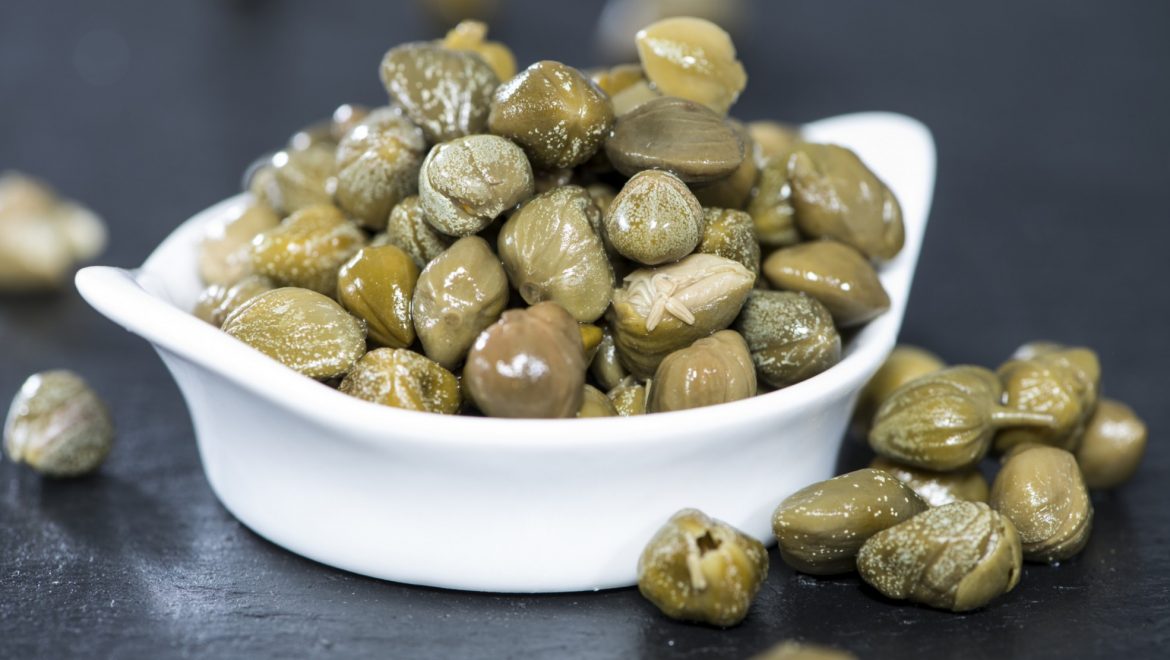
Capers are actually the immature, dark green flower buds of the caper bush (Capparis spinosa or Capparis inermis), an ancient perennial native to the Mediterranean and some parts of Asia. Capers are most often preserved by pickling them in a brine or vinegar.
The caper plant is gorgeous for starters, the beautiful purple tones juxtaposed with the white petals and dark green foliage will catch your eye in no time. The large bushes can dominate quite the area in local fields and are usually found by rubble walls.
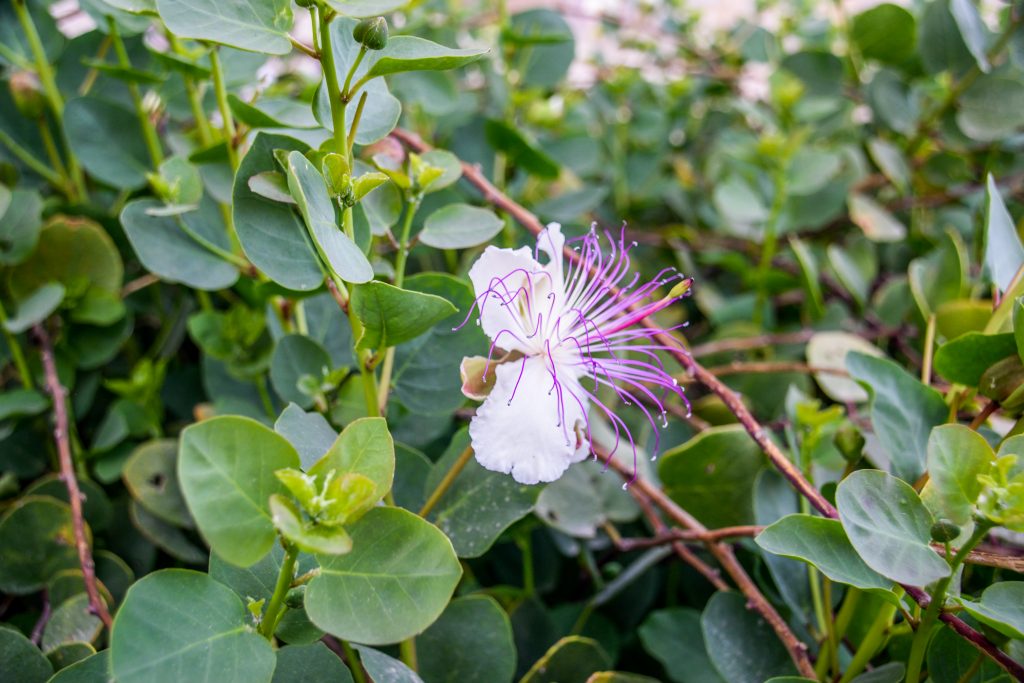
Photo: Glen Gauci
The season for picking them in Malta and Gozo starts mid April until end of June. The buds, when ready to pick, are a dark olive green and about the size of a fresh kernel of corn. Now very often one can see people with a bag or bowl standing in the bushes to pick their little harvest.
The pickling is made either in salted water which is made by ratio of 1:10 (for every part of salt, 10 parts of water is added) or pickled in vinegar. Intense flavor is developed as mustard oil (glucocapparin) is released from each caper bud. This enzymatic reaction leads to the formation of rutin often seen as crystallized white spots on the surfaces of individual caper buds.
Capers are categorized and sold by their size, defined as follows, with the smallest sizes being the most desirable: non-pareil (up to 7 mm), surfines (7–8 mm), capucines (8–9 mm), capotes (9–11 mm), fines (11–13 mm), and grusas (14+ mm). If the caper bud is not picked, it flowers and produces a fruit called a caper berry.
There is more than one way to use Gozo capers, below you can find some example;
Salads – Throw a handful of capers into leafy greens or grain bowls. They add texture, and a pop of bright and briny flavor. They’re also great to incorporate into salad dressing; if you’re not a fan of anchovies in a Caesar salad, they are a great alternative to provide a comparable salty flavor.
Eggs – When you throw a gathering or dinner party at home with deviled eggs on the menu, top them with a few capers in place of paprika for the finishing touch.
Oysters – Top freshly opened oysters with a few capers for a quick and easy topper or mix them into your mignonette sauce.
Tuna – Capers are a delightful complement to Tuna that’s been poached with lemons, basil and some onions, baked in the oven, pan-seared on the stove, or lightly fried.
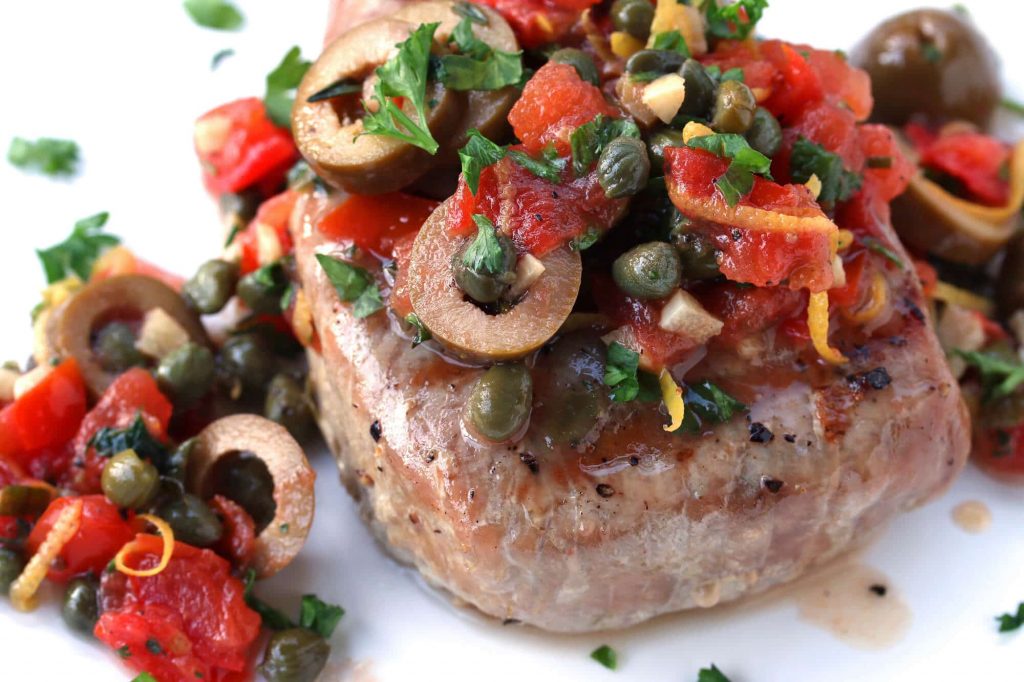
Sandwiches and Wraps – Whatever you prefer for your deli meats, cheeses, and other fillings, it’s a real pro move to go ahead and tuck a few capers in the middle of your sandwich or wrap to add a burst of acidity without using a splash of pungent vinegar.
Pasta – Virtually any pasta dish is game to be enhanced with capers. These little buds compliment tomato sauces and can do wonders to pump up a basic white cream sauce. Traditionally, puttanesca already calls for capers in most recipes, so that’s a perfect caper-pasta scenario to start with if you’re feeling unsure.
Tartar Sauce – Mix the mayonnaise, pickle, capers, parsley, lemon juice, and onion together in a small bowl. Cover and refrigerate until chilled through, at least an hour and preferably overnight and you can use it with your fish & chips.
Ħobż Biż-Żejt – Last but not least our favourite Maltese snack. Drizzle some olive oil, some sweet tomatoes paste, and top it of with some capers and Gozo Cheese. NB. If it is eaten by the beach it tastes better 😉
 It-Tokk, Independence Square, Victoria, Gozo | Ta’ Dbiegi Crafts Village, Gharb, Gozo
It-Tokk, Independence Square, Victoria, Gozo | Ta’ Dbiegi Crafts Village, Gharb, Gozo

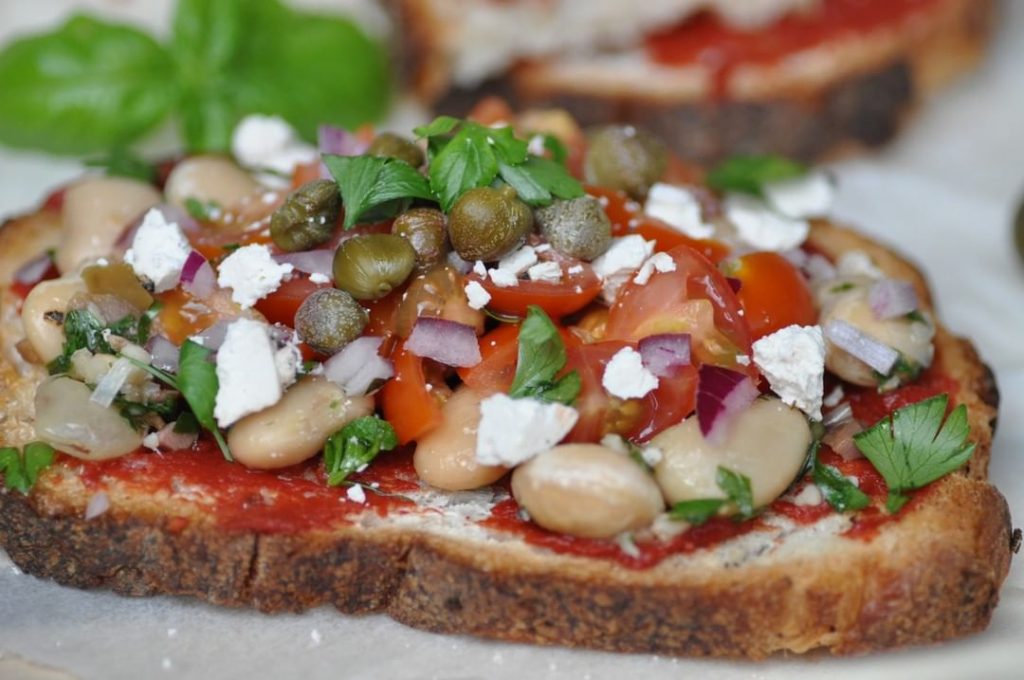
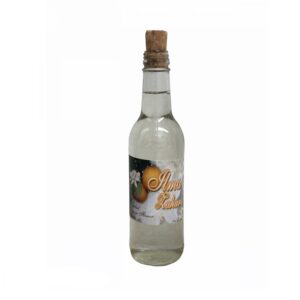


0 comments
Write a comment